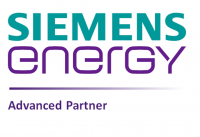Tips To Improve the Energy Efficiency Of A Blower
Posted in Uncategorised, on December 16, 2022 By Admin
A blower is a type of mechanical device that is used to move air or gas. The most common type of blower is the centrifugal blower, which uses a rotating impeller to generate airflow. Blowers are used in a variety of applications, including HVAC systems, wastewater treatment, and manufacturing. Improving the energy efficiency of a blower can have many benefits, including reducing operating costs, reduction in blower repair and greenhouse gas emissions. Here are 4 ways to improve the efficiency of a blower.
4 Ways To Make A More Efficient Blower
Changing Fan Location
When it comes to improving the energy efficiency of a blower, one of the simplest things you can do is change the location of its fan. This will effectively reduce the length of the pathway and make it more efficient around bends, thereby improving its performance by a noticeable margin.
Use Variable Axial Fans
When it comes to blowers, one size does not fit all. That's why variable pitch axial fans are such an important energy-saving tool. By allowing you to adjust the airflow to match the specific needs of your application, variable axial fans can help you avoid overspending on energy. Combining this with multi-speed motors can lower power consumption by almost 30 percent if done right.
Identify Right Blower For the Application
When it comes to improving the energy efficiency of a blower, one of the most important factors to consider is choosing the right blower for the application. There are many different types and sizes of blowers on the market, so it is important to select one that is properly sized for the job at hand. If a blower is too small for the application, it will have to work harder and use more energy to get the job done. On the other hand, if a blower is too large for the application, it will not be able to operate at its full potential and will also waste energy.
In addition to selecting the right size blower, it is also important to choose a model that is designed for energy efficiency. Some models of blowers are more efficient than others, so be sure to do the research before making a purchase.
Also, make sure that the unit is properly installed and that all ductwork is properly sealed.
Focus On Blower Inlet
Blower inlet design is often overlooked when trying to improve the energy efficiency of a blower. By focusing on the inlet design, one can improve the airflow of the blower and reduce energy consumption.
There are a few factors to consider when designing the inlet of a blower:
- The shape of the inlet. The inlet should be designed to minimize turbulence and promote smooth airflow into the blower.
- The size of the inlet. The inlet should be large enough to allow adequate airflow into the blower, but not so large that it causes an excessive pressure drop.
- The location of the inlet. The inlet should be located so that it is exposed to as much uniform airflow as possible.
- The surface finish of the inlet. The smoother the surface finish, the better the airflow into the blower will be.
You can always count on us at McRae Engineering to provide you with the best quality engineering solutions such as regenerative blowers, liquid ring pumps, claw pumps, heat exchangers, and more. Contact us today to learn more about everything that we can do for you.



























